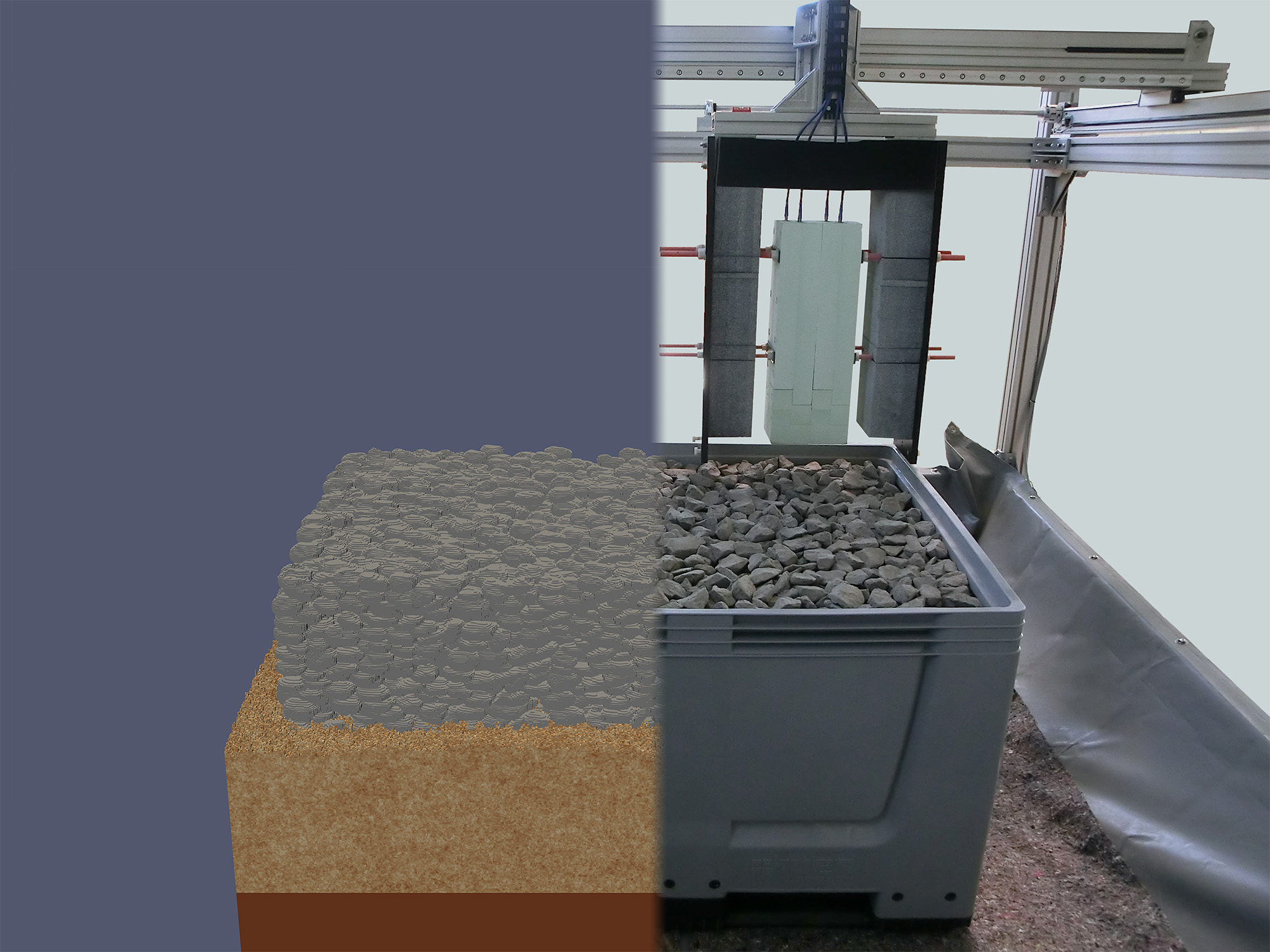Early detection of track bed damage using radar
During incessant rains, for example the monsoon, even sophisticated track beds have little chance of draining the water. This results in undercutting and holes, which can in turn lead to serious accidents. Using a ground-penetrating radar system, such undercutting can be detected in good time along the entire length of the track in a contactless process.
Track beds essentially consist of three different layers: The ballast bed, also known as bedding, the subgrade protection layer and the substructure or subgrade. The function of the structures is to distribute the weight of the train evenly over the ground and to allow rainwater to run off. However, the ravages of time gnaw away at the track beds: Some ballast stones crack due to the pressure of the trains, and the track bed also widens and becomes shallower over the years. The main problem is too much rain, for example in monsoon areas, or melt water in mountainous regions: The water can wash out the ballast bed and substructure and tear holes in them, which can in turn lead to serious accidents. However, verifying these signs of wear and tear has hardly been possible up to now. The current possibilities are visual inspection and digging a hole to check the structure at random intervals.
Non-destructive analysis of the entire track bed
Together with RWTH Aachen University, Fraunhofer FHR has now developed a GPR (Ground Penetrating Radar) system that can be used to examine the track beds non-destructively and over their entire length. To do this, the radar system must be mounted on a mobile platform that can travel along the track and examine it. The system can detect holes down to a depth of about one meter, which is more than adequate for a normal track bed depth. The spatial resolution is one centimeter. This enables the acquisition of high-resolution radar images, which can be used to examine small structures within the track ballast.
The main challenge lies in evaluating the collected data: Where in the track bed is there damage? A sophisticated system made up of real-life tests, simulations and machine learning helps with this. In a track bed model, cavities within the track bed were firstly modeled under various conditions such as ballast contamination and aging, then measured using ground penetrating radar. These real-world results were used to improve the simulation model. The simulation results, in turn, created the huge database needed to train the machine learning. Generating this database using trackbed models alone would take several years, whereas simulating the required data requires only a fraction of the time. The simulation model is ready, and one company has already expressed interest.
